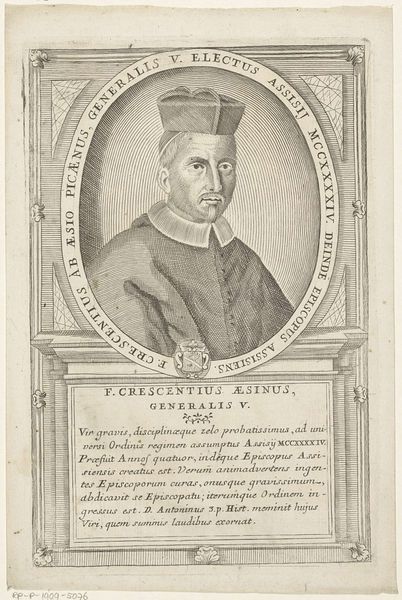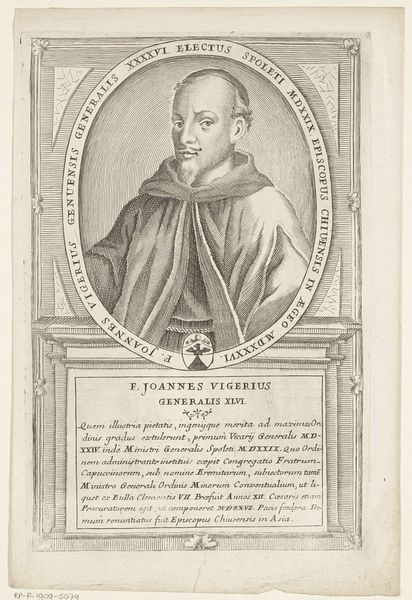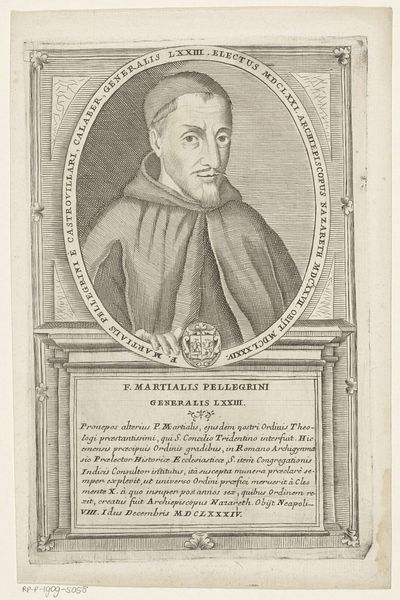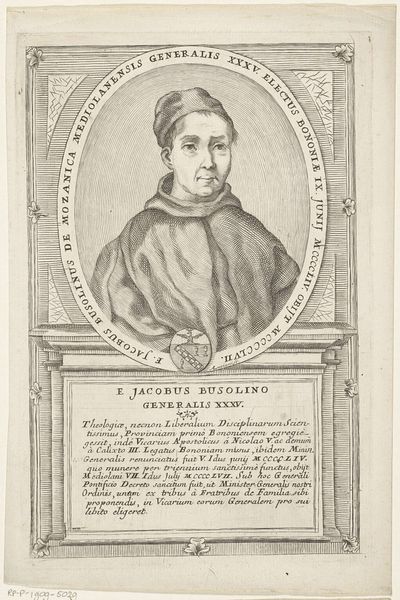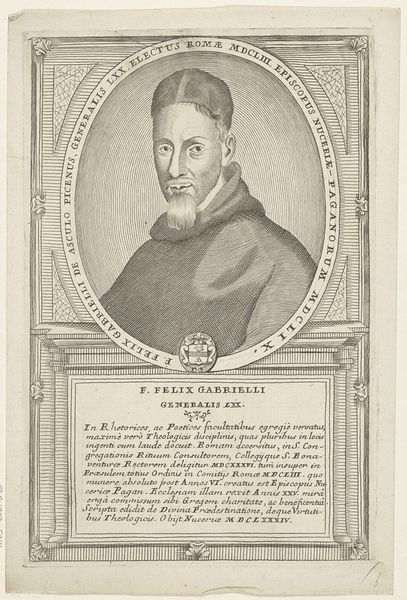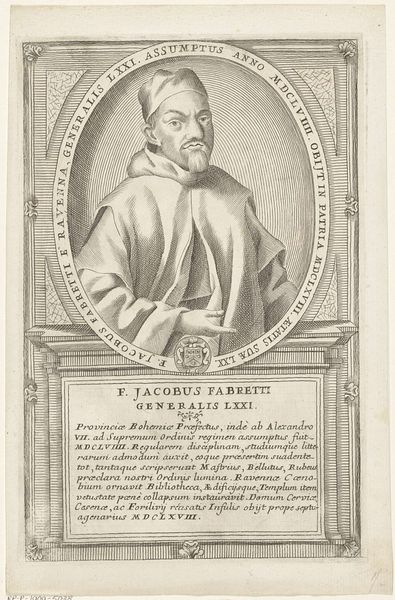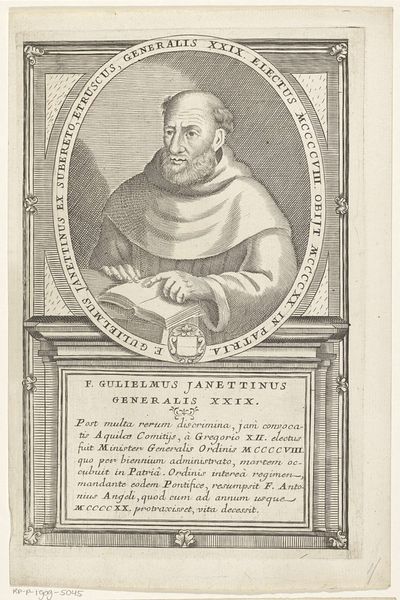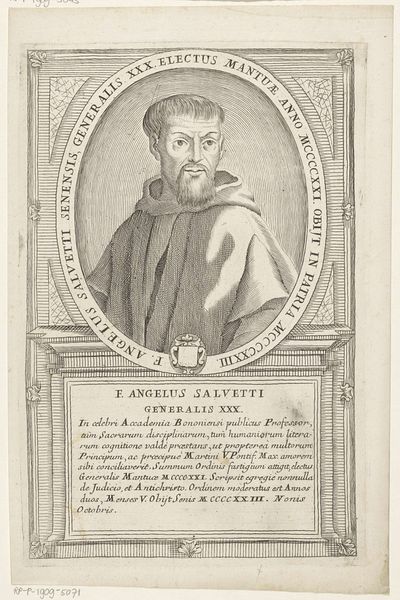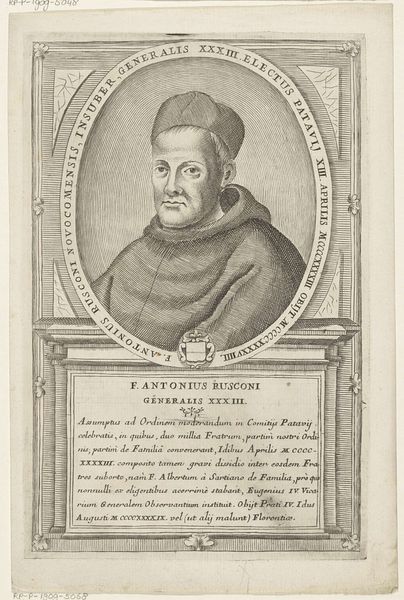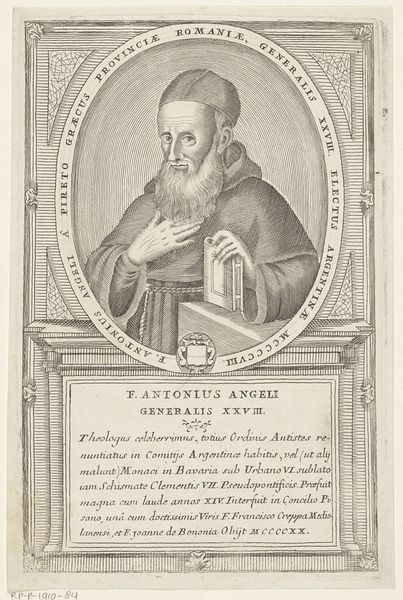
Portret van Domingo Andrea Borghesi, 80ste Minister Generaal van de franciscaner orde 1710 - 1738
0:00
0:00
print, engraving
#
portrait
#
baroque
# print
#
figuration
#
line
#
history-painting
#
academic-art
#
engraving
Dimensions: height 246 mm, width 161 mm, height 158 mm, width 131 mm
Copyright: Rijks Museum: Open Domain
Curator: Oh, isn’t that something? "Portret van Domingo Andrea Borghesi," dating from between 1710 and 1738, depicting the 80th Minister General of the Franciscan Order. It has this incredible feeling, so stern and kind somehow at once...almost melancholic. Editor: The etching is meticulous; look at how systematically they approached translating texture into line. Given Borghesi’s position within the Franciscan Order, how do you read the means of production? Were such prints common as gifts or symbolic exchanges during this time? Curator: I think so. This wasn't meant as personal expression in the same way we understand it today, right? The image serves less as a likeness and more as an affirmation of his place, a declaration of the Order’s power and, yes, its gifts to society. He looks almost imprisoned by all that etched detail! Editor: "Imprisoned" feels heavy-handed. I appreciate how the intricate frame of Latin text roots Borghesi within a material and intellectual lineage. We can almost feel the weight of the paper, the incisive labor needed to make this, not just artistic virtuosity. Did his likeness circulate widely do you know? Curator: Presumably within the Order, for sure, and perhaps among its benefactors. Imagine this man – he lived during a tempestuous era of change; look at his eyes as if questioning something even back then! A really personal reading of a religious portrait could suggest the quiet interior battle in which faith intersects intellect? Editor: True, and it reminds me to ask: how much do such symbolic likenesses affect tangible social conditions? We tend to lose the connection when discussing 'high art,' but there had to be social mechanisms governing its consumption by everyday believers, even the less privileged, right? Curator: Exactly! The availability of devotional materials often helped to determine someone’s social standing as well, almost creating this feedback loop to show one’s commitment... though perhaps with less intention than the Franciscan friars imagined. The baroque is almost deceptive. It offers a spectacle that in reality demands devotion... or consumption in line. Editor: Yes! Consumption—whether of literal objects, of faith itself, or even simply admiration for a man and his teachings represented via reproductive art media. Perhaps those two can't be completely teased apart and aren't mutually exclusive as scholars often suggest. Curator: It gives me something to really ponder... a humble yet forceful depiction; as if Borghesi has managed to reach out beyond his constraints somehow, all captured in the humble materials used and preserved today!
Comments
No comments
Be the first to comment and join the conversation on the ultimate creative platform.

